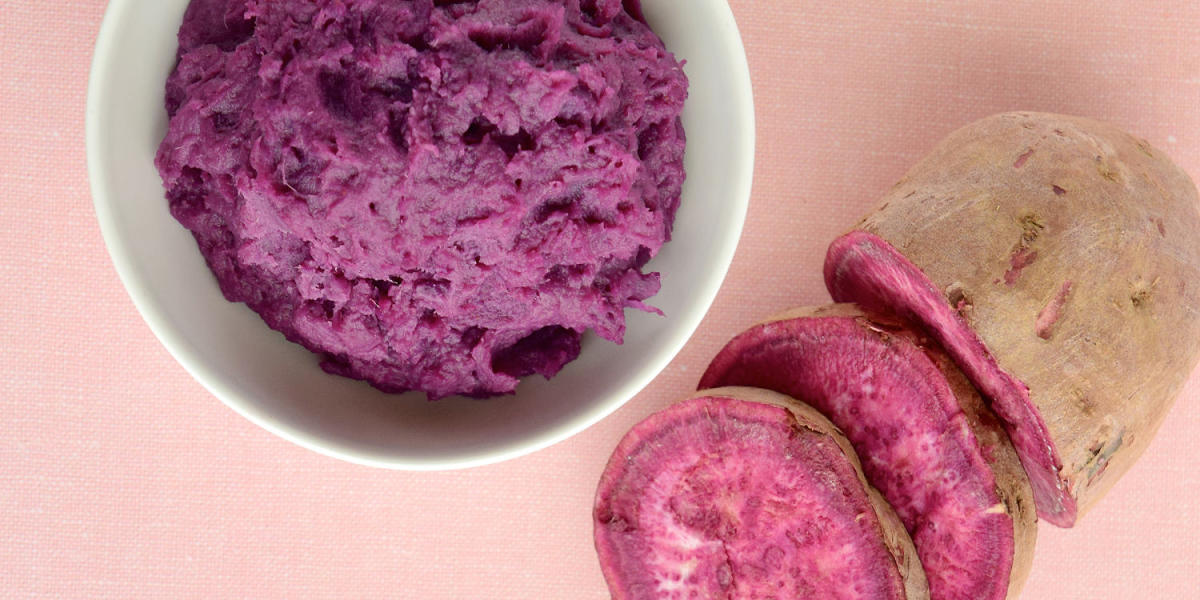This story was first published on June 24, 2021.
With its eye-catching color and sweet-but-subtle flavor, ube has been on dessert menus everywhere over the past few years. A staple in Filipino cooking for generations, ube became Instagram-famous around 2016, crossing into full-on food trend status thanks to bakers showcasing bright purple ube doughnuts, cheesecakes, ice creams and more. Even if you’re late to the purple party, it’s still worth giving this vibrant vegetable a shot.
What is ube?
Ube is a starchy vegetable also known as purple yam — which is not the same as purple sweet potatoes, though they are similar and can be substituted in recipes. Yams, for one, grow on vines, while sweet potatoes grow underground. Ube is often confused with Stokes Purple sweet potatoes or Okinawan sweet potatoes.
Ube has stunningly bright purple flesh and a sweet, nutty flavor with hints of vanilla and pistachio, which is why it’s long been a central ingredient in Filipino desserts and some savory dishes. Additionally, ube is as nutritious as it is delicious (although ube desserts … are still desserts … with plenty of sugar and cream). Ube is high in vitamin C, antioxidants and resistant starch, making it a great prebiotic.
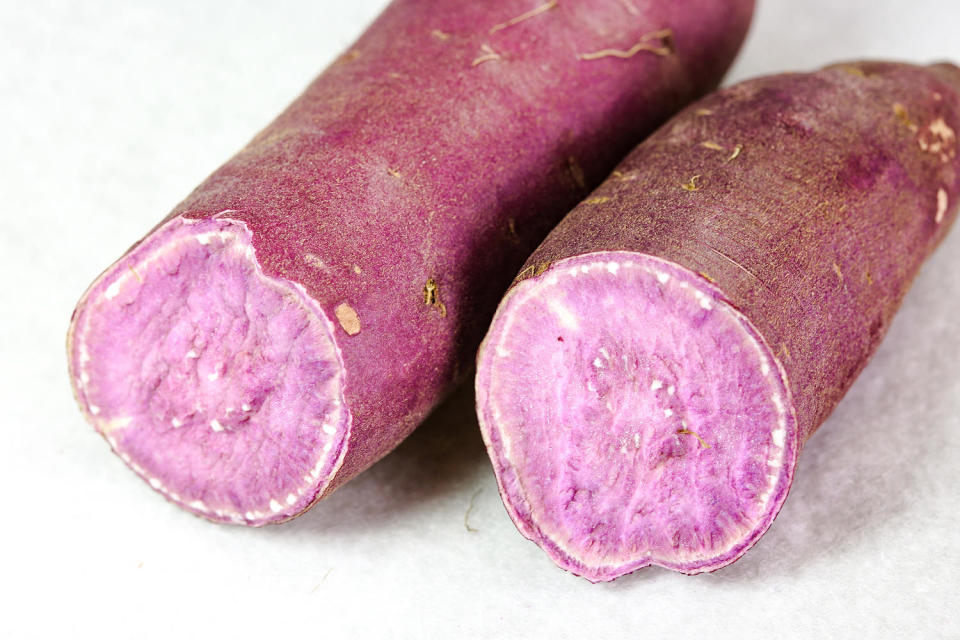
Ube is grown in abundance in the Philippines and other Southeast Asian countries, holding a special place at the table in Filipino households. It’s rare to find fresh ube in the U.S., but you can find frozen, grated ube at Filipino markets and some pan-Asian grocery stores.
Ube may also be confused with taro, a starchy, brown-skinned root vegetable. The flesh of taro is typically more white with purple specks, as opposed to the deep purple flesh that ube presents. These are not interchangeable in most recipes; taro has a more neutral flavor that is similar to white potatoes, and is great for curries, stews and mashes, as well as for frying and roasting. Taro milk tea is a popular Taiwanese bubble tea flavor, with the taro serving as a thickener. In sweet applications like this, you can swap taro for ube, and you’ll just want to adjust the amount of additional sweetener accordingly.
How to cook with ube
You can prepare ube in a similar way to sweet potatoes. Wash them, leave the skins on for extra fiber, and then boil, steam or bake them for 30 to 40 minutes, until they are tender.
Ube halaya, a creamy purple jam made with ube, is a popular Filipino sweet treat. Cooked ube is blended with evaporated milk, coconut milk, condensed milk and sugar and then simmered for about 45 minutes. The result is a rich, concentrated spread that’s great slathered on toast or as a topping for the Filipino dessert, halo halo.
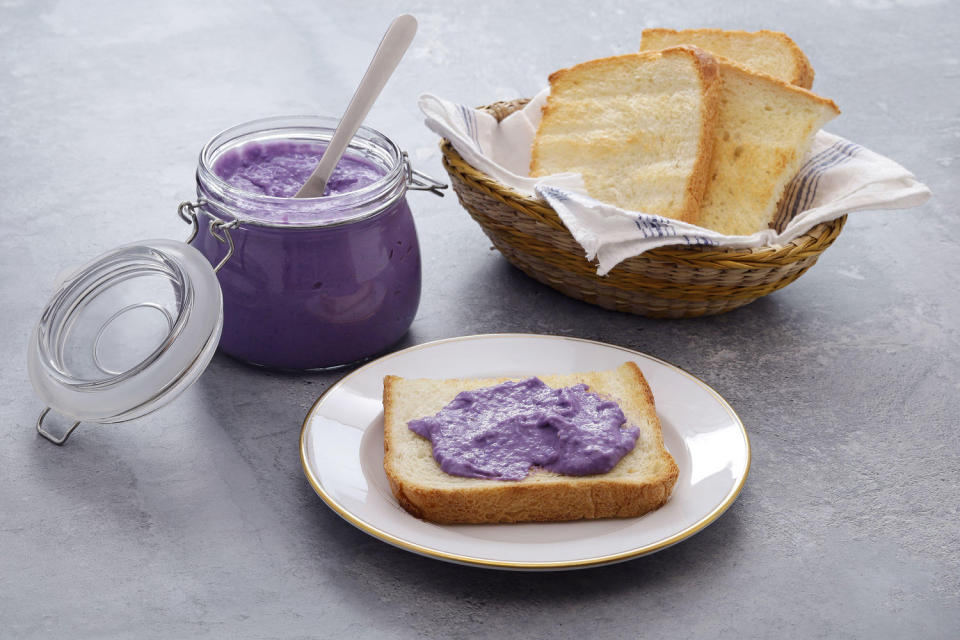

You can make ube halaya yourself, using Okinawan sweet potatoes as a substitute if you can’t find ube. You can also buy a jar of ube halaya online or at Asian grocery stores.
Ube halaya is an easy way to add the ube flavor and bright color to desserts that you’re making at home. You can add 1/4 to 1/4 cup of ube halaya to homemade ice cream mixes, custards, parfaits or cheesecakes, for example.
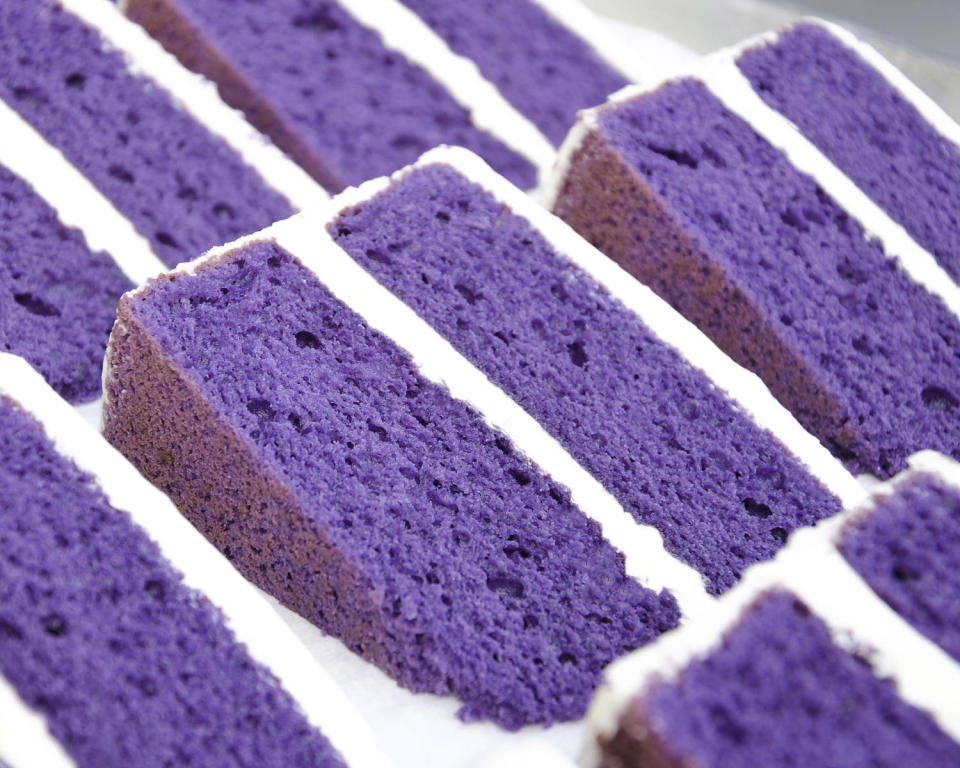

Additionally, you can also find ube powder and ube extract, which are more ways to impart ube flavor into your baked goods, including pancakes and waffles. You can swap out a couple of tablespoons of flour for ube powder in most recipes.
Whether you want a more natural way to make bright purple, Insta-worthy treats or just want to expand your vegetable repertoire, ube, will add a whole new dimension to your favorite recipes.
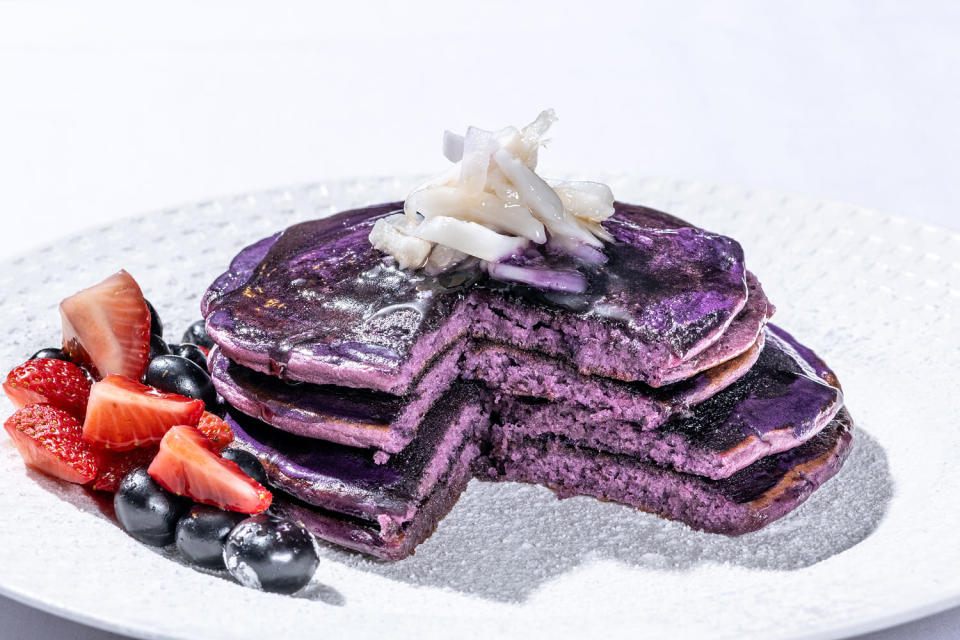

This article was originally published on TODAY.com
